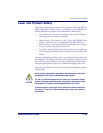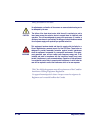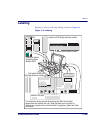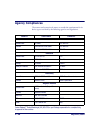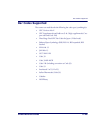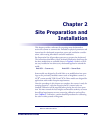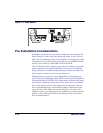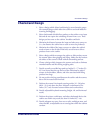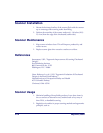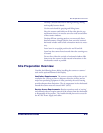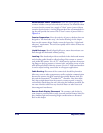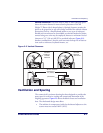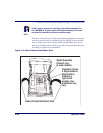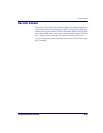
Checkstand Design
Product Reference Guide 2-3
Checkstand Design
1. Select a design which allows load-sharing by several muscle groups
(for example designs which allow the cashier to use both hands for
scanning and bagging).
2. Select checkstands which deliver products to the cashier on an input
belt and do not require the unloading of items from a cart. These
designs put less stress on the cashiers’ shoulders and back.
3. Minimize the distance between the input and take-away conveyors
(i.e., the distance the cashier has to reach to move the products).
4. Minimize the width of the input conveyor to reduce the cashier’s
reach to items on the far side of the belt; use a diverter to direct
products closer to the cashier.
5. Select a design which encourages the cashier to slide products across
the scanner rather than gripping and lifting. Make sure the horizon-
tal surface of the scanner is flush with all surrounding surfaces.
6. Choose a design which integrates the scanner and scale to eliminate
extended reaches and lifts during weighing tasks.
7. Provide an easily accessible bag stand at a height 13 - 17 inches (33 -
43.2 cm) lower than the top surface of the checkstand to reduce
stresses to the shoulders, elbows, and risks associated with lifting
products into bags.
8. Do not position the bag stand between the cashier and the scanner,
due to the increased reach involved.
9. Position the scanner’s horizontal scanning surface 34 - 36 inches
(86.4 - 91.4 cm) above the floor. Maintain a minimum of five
inches (12.7 cm) clearance between elbows and work surfaces.
10. Provide adjustable keyboard mounting (height, tilt, and horizontal
reach).
11. Position the printer, cash drawer, and other checkstand devices the
cashier uses within easy reach (less than 18 inches/45.7 cm).
12. Provide adequate toe space, foot rests or rails, antifatigue mats, and
where feasible, an adjustable seat or stand against which the cashiers
can lean.



